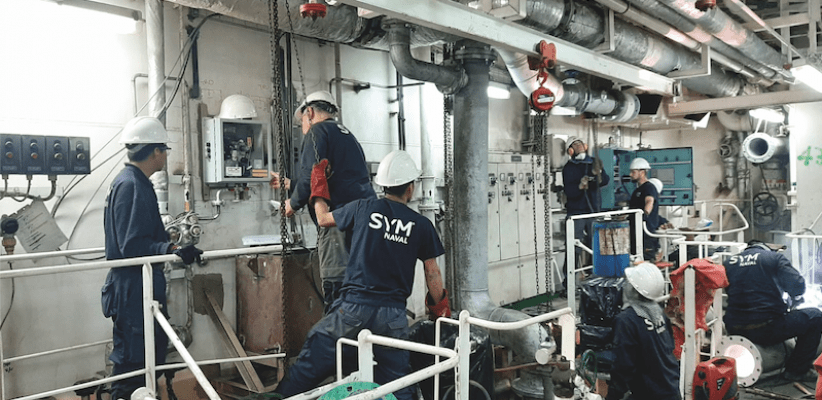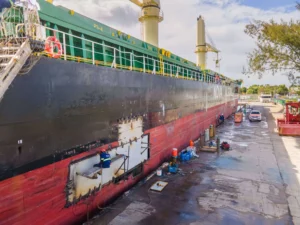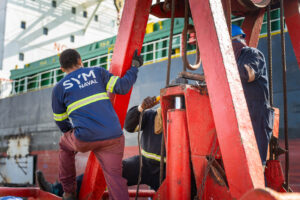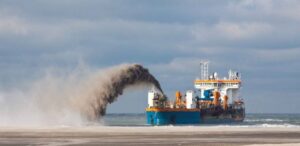Ballast is weight added to a vessel to optimize its stability and navigability. Traditionally, solid materials such as rocks or metal were used. However, since the late 19th century, water became the predominant ballast due to the ease and lower cost of its loading and unloading. Ballast water, therefore, is sea or fresh water taken into specific tanks on a vessel.
Understanding ballast and ballast water
What does ballast mean? In a general sense, ballast refers to any heavy material used to stabilize an object. What is ballast in the context of a ship? It is a weight added to control trim, draft, stability, and hull stresses.
What is ballast water and what is it used for? Ballast water is water that ships load to maintain safe operating conditions during a voyage. This water provides weight to compensate for the absence of cargo or to balance the weight of unevenly distributed cargo. Vessels can take water from the environment in which they are located, totally or partially filling tanks specifically designed within the hull.
The function of a ship's ballast system
How does ballast work on a ship? A ship’s ballast system is composed of a series of tanks, pumps, and pipelines. Pumps are used to take up or discharge water from these tanks. The amount of ballast water onboard varies according to the ship’s size, loading conditions, and operational needs. For instance, an unladen vessel requires a significant amount of ballast water to submerge the propeller and rudder adequately, and to maintain stability. Why do ships discharge ballast water? Ships discharge ballast water when, for example, they load cargo, as the weight of the cargo replaces the need for the water’s weight to maintain stability. This discharge can occur at a location distant from the original uptake point.
The process of taking up and discharging ballast water is a standard operational practice. Ballast tanks are strategically distributed throughout the vessel to allow precise adjustments in stability and trim.
The composition of ballast water
Ballast water contains the aquatic organisms, sediments, and pathogens present in the water where it was taken. These can include a wide variety of marine life at different stages of their life cycle, such as plankton (phytoplankton and zooplankton), bacteria, and viruses. Sediments accumulated at the bottom of ballast tanks can also harbor organisms in a dormant state.
Ecological and health considerations of ballast water discharge
The discharge of ballast water was recognized as a vector for the transfer of aquatic species to new environments.
Introduction of non-native species
The primary problem associated with ballast water is the introduction of non-native or invasive aquatic species into new marine ecosystems. When a vessel takes up ballast water in one port and discharges it in another, the living organisms transported in that water can establish themselves and proliferate in the new environment if conditions are favorable. These invasive species can compete with native species for resources, prey on them, or alter the habitat. The result can be a loss of biodiversity and significant changes in the structure and function of aquatic ecosystems. Numerous cases of biological invasions with severe ecological and economic consequences have been documented. A study conducted in the Port of Barcelona, sampling the ballast tanks of five vessels of diverse origin, identified 54 different phytoplankton taxa and 69 different zooplankton taxa.
Health risks
In addition to the ecological impact, ballast water can transport pathogenic microorganisms, such as bacteria and viruses, which pose a risk to human health. A known example is the bacterium Vibrio cholerae, the causative agent of cholera, which can be transported in ballast water and, upon discharge, contaminate coastal waters used for recreation or as a source of seafood.
Regulatory framework for ballast water management
To address the risks associated with ballast water, international regulations have been developed.
The international convention for the control and management of ships’ ballast water and sediments
What is the Ballast Water Convention? The International Maritime Organization (IMO) adopted the International Convention for the Control and Management of Ships’ Ballast Water and Sediments (BWM Convention) in 2004. This convention entered into force on September 8, 2017. What is the applicable regulation for ballast water? The BWM Convention is the primary international legal instrument. It establishes standards and procedures for the management and control of ships’ ballast water and sediments. Its objective is to prevent, minimize, and ultimately eliminate the transfer of harmful aquatic organisms and pathogens through ballast water.
The BWM Convention establishes two main standards for ballast water management:
The ballast water exchange standard (Regulation D-1): This requires ships to exchange ballast water taken up in coastal waters with oceanic water, far from the coast, where coastal organisms are less likely to survive or oceanic organisms are less likely to thrive in the next port. At least 95% of the volume of water in the tanks is expected to be exchanged.
The ballast water performance standard (Regulation D-2): This specifies the maximum number of viable organisms of different sizes and of certain indicator microbes that can be discharged. To comply with this standard, most ships need to install a ballast water treatment system.
All new ships must comply with the D-2 standard. Existing ships must comply gradually, according to a schedule established by the IMO, generally linked to the renewal date of their International Oil Pollution Prevention (IOPP) Certificate.
The BWM Convention establishes two main standards for ballast water management:
- The ballast water exchange standard (Regulation D-1): This requires ships to exchange ballast water taken up in coastal waters with oceanic water, far from the coast, where coastal organisms are less likely to survive or oceanic organisms are less likely to thrive in the next port. At least 95% of the volume of water in the tanks is expected to be exchanged.
- The ballast water performance standard (Regulation D-2): This specifies the maximum number of viable organisms of different sizes and of certain indicator microbes that can be discharged. To comply with this standard, most ships need to install a ballast water treatment system.
All new ships must comply with the D-2 standard. Existing ships must comply gradually, according to a schedule established by the IMO, generally linked to the renewal date of their International Oil Pollution Prevention (IOPP) Certificate.
Ballast water management plans
The BWM Convention requires all ships to have a Ballast Water and Sediments Management Plan approved by the ship’s flag State Administration. This plan is specific to each ship and includes details on safety procedures, ballasting operations, the location of sampling points, and a description of the ballast water treatment system, if installed. They must also carry a Ballast Water Record Book to log all ballasting operations.
Ballast water treatment systems
What is a ballast water treatment system? A ballast water treatment system (BWTS) is equipment installed onboard ships to process ballast water before discharge, in order to comply with the D-2 standard of the BWM Convention. These systems are designed to remove, inactivate, or render non-viable aquatic organisms and pathogens.
Purpose of treatment systems
The fundamental purpose of a BWTS is to ensure that discharged ballast water contains a concentration of viable aquatic organisms below the limits set by Regulation D-2. This significantly reduces the risk of transferring invasive species and pathogens.
Types of ballast water treatment technologies
Various technologies exist for ballast water treatment, which can be classified into several main groups. How many types of water treatment are there (specifically for ballast water)? Generally, ballast water treatment systems use a combination of physical and chemical or biological methods. The most common methods include:
- Filtration and physical separation: Many systems employ a filtration stage, usually as a pre-treatment, to remove larger particles and organisms. Physical separation technologies may include hydrocyclones.
- Ultraviolet (UV) light treatment: UV irradiation damages the DNA of organisms, preventing their reproduction and rendering them non-viable. This method does not use active chemicals. It is often combined with filtration.
- Electrochemical/electrolysis treatments (electro-chlorination): These systems generate disinfectants, such as hypochlorite, from seawater through electrolysis. The hypochlorite neutralizes organisms. Subsequent neutralization of residual disinfectant may be required before discharge in some cases.
- Chemical and biocide treatment: This involves the addition of chemical substances (biocides) to the ballast water to kill or inactivate organisms. These biocides must be effective and environmentally safe upon discharge, and may require neutralization.
- Deoxygenation: This involves reducing the dissolved oxygen content in ballast water to very low levels, creating an anoxic environment that is lethal for most aerobic organisms.
- Heat treatment: Heating the ballast water to a specific temperature for a certain duration can kill organisms. This method can be energy-intensive.
- Cavitation/Ultrasound: These methods use the energy released by the creation and collapse of cavitation bubbles or ultrasonic waves to damage and destroy organisms.
The choice of a ballast water treatment system depends on factors such as the type and size of the vessel, the operational profile, available space onboard, and installation and operational costs. Each system must be approved by the ship’s flag Administration, following IMO guidelines.



